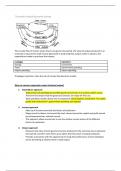Summary
Summary IB ECONOMICS HL, DETAILED NOTES, UNIT 3 MACROECONOMICS (w real world examples)
- Module
- Economics HL
- Institution
- University College London (UCL)
Written by someone who achieved a 7 in HL Economics, this document provides an in-depth guide to unit 3 of HL Economics (macroeconomics). This guide includes detailed real world examples (of monetary policy, for example) which are vital in securing a level 7 in HL Economics :)
[Show more]



